I guess I should say "Thank Bud for the Wild Card," but I'm reluctant to give any sort of positive credit to a man who appears so patently slimy in most other regards. Certainly, Selig's directive to expand the playoffs has turned out to be a good thing, but let's not encourage him, OK? It's bad enough that we've got a used-car salesman running The Show until something like the year 2525, let's just not provide him with any more ammunition in his battle for world domination.
Anywho, the Wild Card.
The Wild Card has proven to be a good thing, in that it provides hope to teams and their fans who might not otherwise be in a race for anything of consequence at the end of August were it not available. Currently, the AL East and Central Divisions are essentially won, by the Yankees and Twins, respectively. (Despite Boston's recent hot-streak, the Yankees have NEVER lost such a significant lead, and the Red Sox can't possibly stay this hot, nor the Yankees this cold. Trust me, it's over.) The West, however, is still hotly contested by the Oakland A's, with only a slim, 2-game lead over Anaheim, who is currently only 1.5 games behind Boston for the AL Wild Card. Texas is also still in the race, three games behind Boston for the WC, and 3.5 behind AL-West leading Oakland. So you've got four teams vying for only two playoff spots, and it's anyone's game, so to speak.
If the old, 2-division format were still in place, the Yankees would still be all but assured of winning the AL East, and Oakland would still have Anaheim and Texas hot on its tail, but the Twins and Red Sox would have virtually no hope of winning anything. So, Minnesota, Selig may have threatened to contract you for no apparent reason other than boredom with the status quo, but he also gave you the chance to flaunt your success in his face to argue against it.
The National League offers an even better scenario. Currently the divisions are all but locked-up, with Atlanta cruising to an 8.5 game lead as August comes to a close, the Dodgers up by 5 games over surprising San Diego, and St. Louis up 15(!) games over the Cubbies. The Wild Card lead, however, is right now jointly held by no less than three teams, the Giants, Cubs and Padres, with two others within 4-game striking distance. That's five teams with a theoretical chance to win one playoff spot by the end of the month, though realistically I doubt Houston or Florida really has it in them to make a surge at this point.
By contrast, the old two-division format would have had Los Angeles and Atlanta (remember when Georgia used to be in the West?) vying for the NL West title, and the Cards running the table in the East. A pretty boring month of Senior Circuit baseball, unless you're a Dodgers or Braves fan.
But really, to determine whether or not the Wild card has truly accomplished its mission, to help more teams feel like they have a real chance, we need to look at history, and to answer a few questions:
1) Have more teams been within Reasonable Striking Distance* of the playoffs with the new format than with the old one? (*RSD = 4.5 games or fewer out by Sept 1. Making up more than a game a week, especially on more than one competitor, is almost unheard of.)
B) And have the teams that have made the playoffs, who would not previously have made it, gotten to and/or won the World Series?
The second question is really the easier to analyze, so we'll take that first. We've got exactly nine years of playoffs since the 3-division format was implemented, which means there were 72 teams that made it. Of those 72 teams, 18 of them, 25% (of course) were Wild Cards, and five of those made it to the World Series. These were the 1997 and 2003 Florida Marlins, the 2002 Anaheim Angels and SF Giants, and the 2000 NY Mets. Of these five teams, three have won the Championship, and two didn't.
Statistically speaking, at the simplest level, a Wild Card team from any given year has approximately a 1-in-4 chance of making the World Series, all other things being equal, even though they're usually not. There are four teams in each league, and the WC is one of them. One in four, simple as that. In actuality, 5 out of 18 have actually made it, or about 28%, roughly what we'd expect. And 60% of those (3 out of 5) have actually won, which I think is probably a small-sample size fluke. In time I expect that this number will end up in the 40% range, because Wild Card teams tend not to be as good as teams that win their divisions, but anything can happen in a short series.
So clearly a Wild Card team has at least as good a chance as anyone else to win it all. A more interesting question, perhaps, is: "How well have teams performed that won their divisions who would not have made the 2-division playoffs?"
I looked at which teams made the playoffs from 1995-2003, and I found that there were, in addition to the aforementioned 18 Wild Card teams, 22 other teams who would not have made the playoffs. The reason for the strange number is that in 2000, the Yankees, A's and Mariners would all have missed the playoffs, as the White Sox would have won the AL West and the Indians would have won the East, assuming that the divisions were aligned as they had been before 1994.
I also made some assumptions about how the NL would have had to be aligned, placing Atlanta in the West from 1995-1997, as they were before the 1998 realignment, and in the NL East after that, and realigning other teams geographically. This screws up a lot, but it has to be done if there is to be any real "what-if" analysis. This means that for all three of those years, both actual NL Central and NL West winners would have missed the playoffs, as Atlanta had a better record than either of them, and the '95 and '96 NL wild cards, coming from the West, would also have missed the cut. In 1997, though, Florida would have won the East, making them the only Wild Card which would have made the playoffs under the previous format.
Also, I made an executive decision that Houston would have been the official NL West winner in 2001, as they were 9-7 against St. Louis, who tied them with a 93-69 record at year-end. They had a better one-on one record, which might mean that they'd have won the division if MLB uses that as a tie-breaker, or that they'd have won a playoff game. We don't really know if they would have won that game, but we'll give them the benefit of the doubt, as it doesn't really matter.
And the survey said...
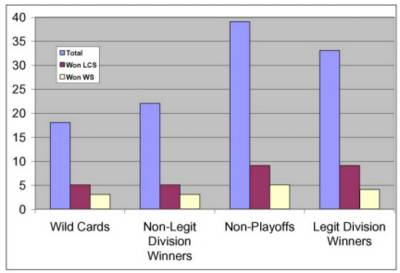
1995-2003 Playoff Breakdown 
So you can see, non-deserving division winners have not fared as well as Wild Cards, though admittedly this is not a mountain of data here. Only 23% of those teams winning their divisions who would not have won a division under the 2-division format have made it to the World Series, though once there, more than half of these have won that Series. Overall, there have been 39 teams that made the playoffs who would not have made it with two divisions (remember, the 1997 Marlins would have won the Atlanta-less NL East), and their performances in the LCS as well as in the World Series have been about what you'd expect: About one in four win their league and about half of those win the World Championship.
This also means that the remaining teams who would have won their divisions have fared about the same. Of those 33 teams, nine (27%) have gone on to the World Series, and four (44%, of course) have won it. Again, we're dealing with what probably constitutes statistically insignificant numbers here, but it's at least interesting to see the early exit polls, if you will. The early results seem to indicate that there's no problem with Wild Card teams or teams who would not previously have made the playoffs winning either too seldom or too often, statistically speaking. Though there have been a handful more non-legit teams than legit teams to make the playoffs, it should be noted that there are a few teams who would have won a division with the old format who did not even make the playoffs in reality.
Well, as I mentioned, that was the third question, the simple one.
The other questions are fairly easy to answer as well. Baseball-Reference.com has a page where you can find the standings for virtually any date in history, or at least in the 20th and 21st centuries. We can see what the standings were coming into September for every years since the inception of the wild card! It'll be fun. I'll be right back...
...OK, I'm back. It turns out that the Wild Card provides hope for roughly twice as many teams as would have had it if we'd kept the two-division format. I found that, on average, there have been about 12 teams within 4.5 games of some playoff spot, a division or wild card berth, since 1994. Under the old system, however, that average dwindles to about 6.5, meaning that half a dozen teams, in an average year, would be left virtually out of contention by the time September rolls around, if we still used two divisions and no Wild Card. That's got to be a good thing.
So the Wild Card, and the new 3-division format, are accomplishing their purposes. They're not only giving more teams during the season a reason to hope for the playoffs, they're providing a very real chance for those teams to win once they're there.
So when you see Bud, and he's off on some diatribe about how today's game of baseball is either enjoying its greatest renaissance or chewing its own leg off, thank him for the Wild Card.
But don't let him get a big head about it, OK?



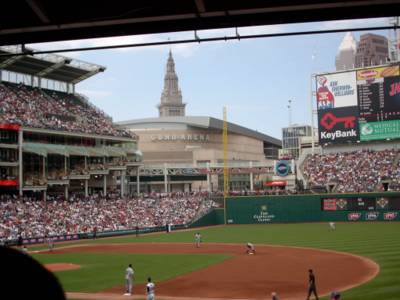
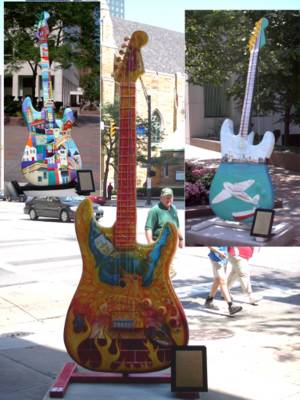

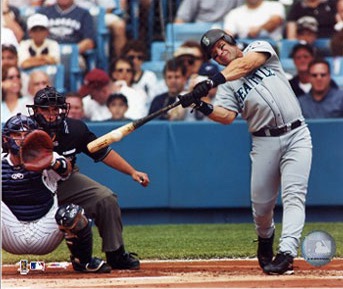
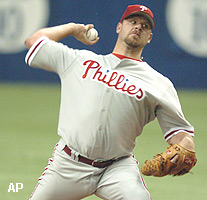


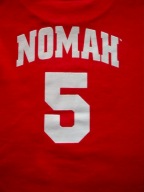
 The Red Sox ridded themselves of a highly paid player they could not re-sign, in Nomah, and a minor league outfielder who may or may not become a major league outfielder in three or four years. They received a shortstop with a good defensive rep, who has hit well in the past, but currently stinks very much bad with the bat, in
The Red Sox ridded themselves of a highly paid player they could not re-sign, in Nomah, and a minor league outfielder who may or may not become a major league outfielder in three or four years. They received a shortstop with a good defensive rep, who has hit well in the past, but currently stinks very much bad with the bat, in  From the Twins' standpoint, they've given up a firstbaseman making three million bucks who hit like a journeyman middle infielder and they got a pitching prospect, which, while not actually existing, is better than a poke in the eye with a sharp stick. It's also less expensive than paying signing bonuses to the draft picks they have gotten in return for Mientkiewicz when he left as a free agent after the season. Sadly, they had a chance to turn Mientkiewicz into Kris Benson, who, while not fooling anyone into thinking he'll ever be the player you'd expect from a #1 overall draft choice, is also exactly the #3-type starter the Twins need, instead of the three #5 starters they do have. Instead, Benson is rounding out the Mets assemblage of #3 starters, along with Steve Trachsel and Victor "JUUUUSSSTTT...A bit outside" Zambrano. You'd think these two teams could help each other out a little!
From the Twins' standpoint, they've given up a firstbaseman making three million bucks who hit like a journeyman middle infielder and they got a pitching prospect, which, while not actually existing, is better than a poke in the eye with a sharp stick. It's also less expensive than paying signing bonuses to the draft picks they have gotten in return for Mientkiewicz when he left as a free agent after the season. Sadly, they had a chance to turn Mientkiewicz into Kris Benson, who, while not fooling anyone into thinking he'll ever be the player you'd expect from a #1 overall draft choice, is also exactly the #3-type starter the Twins need, instead of the three #5 starters they do have. Instead, Benson is rounding out the Mets assemblage of #3 starters, along with Steve Trachsel and Victor "JUUUUSSSTTT...A bit outside" Zambrano. You'd think these two teams could help each other out a little!
 From the Expos standpoint, well, they got rid of a player who was clearly, vocally unhappy in Montreal, making SIX MILLION DOLLARS, or $1.5 mil per homer, and they got another shortstop making almost six million dollars, and hitting even worse. And some prospects. Hopefully the new owners will like prospects, because that all that's likely to be left by the time the team is sold.
From the Expos standpoint, well, they got rid of a player who was clearly, vocally unhappy in Montreal, making SIX MILLION DOLLARS, or $1.5 mil per homer, and they got another shortstop making almost six million dollars, and hitting even worse. And some prospects. Hopefully the new owners will like prospects, because that all that's likely to be left by the time the team is sold.
 And from the Cubs' view, they got Nomah! He's at least a ten-run upgrade on the Alex Gonzalez/Ramon Martinez platoon, offensively, and he makes that lineup all the tougher to juggle, not to mention, to pitch against successfully. They lost an overrated, overpaid, sub-mediocrity having a bad season, and a couple of prospects who may or may not turn into serviceable major leaguers, but whom nobody expects to be stars, yet. But they gained two months of a superstar shortstop, and now the Cubs have to be the favorite to win the Wild Card. A lineup whose worst-hitting regular is Corey Patterson (.757 OPS, 11 homers, 15 steals) literally has no weaknesses. And the rotation has mark Prior and Kerry (knock on)Wood back healthy, to go with Carlos Zambrano, Matt Clement and
And from the Cubs' view, they got Nomah! He's at least a ten-run upgrade on the Alex Gonzalez/Ramon Martinez platoon, offensively, and he makes that lineup all the tougher to juggle, not to mention, to pitch against successfully. They lost an overrated, overpaid, sub-mediocrity having a bad season, and a couple of prospects who may or may not turn into serviceable major leaguers, but whom nobody expects to be stars, yet. But they gained two months of a superstar shortstop, and now the Cubs have to be the favorite to win the Wild Card. A lineup whose worst-hitting regular is Corey Patterson (.757 OPS, 11 homers, 15 steals) literally has no weaknesses. And the rotation has mark Prior and Kerry (knock on)Wood back healthy, to go with Carlos Zambrano, Matt Clement and 


